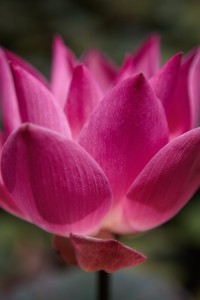I have been meditating regularly usually twice a day for years. But sometimes it doesn’t seem to matter. Something happens, my mind and emotions go off balance and no matter how hard I try I keep getting stuck in that limited space with the mental obsessions. Mind mind acts like an old vinyl record that gets stuck in the groves and plays the same words over and over and over. 
I needed a refresher, a breather, a remembering of that spaciousness of mind that comes when I’m in deep meditation. It took going back into satsang, the company of other seekers and the presence of a good teacher to move me back to a state of deeper mindfulness. At Shiwa Center, Tibetan Lama, Bhakhang Tulku Rinpoche carried with him the mantras and prayers to still my monkey mind. Being in the presence of his authentic stillness brought my wild mind into a place of restful awareness.
But first we began with questions. “I have practiced mind training for years. Why can I not keep my mind still? My emotions are pulling me off balance. How can I engage with the world and not be an emotionless, distant person? How can I be in the world and not of it?” These were my big questions, the ones that I carry in my heart. One by one the teacher dispelled my doubts and spoke words of clarity.
The emotions are part of the mind, caused by thoughts. I feel the emotions stirred up on the left side, the feminine side of the body. These are related to craving and attachment, the lama said. By letting go of attachment and desires, it becomes possible to remain anchored in the present. We also need to recognize and constantly remember the impermanent nature of life. The body will fall ill. The body will die. Today we feel pleasure and tomorrow suffering. By accepting all that comes with equanimity, the mind remains content and joyful.
The emotions become light rather than dense and they become limitless. Instead of making us less emotional, the lama said we become more deeply and expansively emotional, but the emotions are positive ones related to compassion and love rather than attachment to something or someone. About retreating from the world, he reminded me that in retreat one hears “the inner crowd,” that inner chatter that seems to be constant and particularly loud when we’re alone. In the world we hear the outer crowd which sometimes distracts us from hearing our inner crowd and taking care of it. It becomes essential to take responsibility for one’s own emotions and not point the finger to blame others. A retreat is one way to reflect and become aware of this.
Finally he reminded me that the mind needs to be returned to one-pointed attention. We practiced breathing deeply and keeping the attention at the base of the nostrils becoming one with the air and breath. In the presence of others sitting in meditation, my mind expanded and my emotions felt balanced. A deep calm settled in. Now the practice is to bring that spaciousness into the world.
Bio: Debra Moffitt is author of Awake in the World: 108 Practices to Live a Divinely Inspired Life. A visionary, dreamer and teacher, she’s devoted to nurturing the spiritual in everyday life. She leads workshops on spiritual practices at the Sophia Institute and other venues in the U.S. and Europe. Her mind/body/spirit articles, essays and stories appear in publications around the globe and were broadcast by BBC World Services Radio. She has spent over fifteen years practicing meditation, working with dreams and doing spiritual practices. Visit her online at http://www.awakeintheworld.com.
800×600
Normal
0
false
false
false
EN-US
X-NONE
X-NONE
MicrosoftInternetExplorer4
/* Style Definitions */
table.MsoNormalTable
{mso-style-name:”Table Normal”;
mso-tstyle-rowband-size:0;
mso-tstyle-colband-size:0;
mso-style-noshow:yes;
mso-style-priority:99;
mso-style-parent:””;
mso-padding-alt:0in 5.4pt 0in 5.4pt;
mso-para-margin:0in;
mso-para-margin-bottom:.0001pt;
mso-pagination:widow-orphan;
font-size:10.0pt;
font-family:”Times New Roman”,”serif”;}
At Shiwa Center, Tibetan Lama, Bhakhang Tulku Rinpoche

